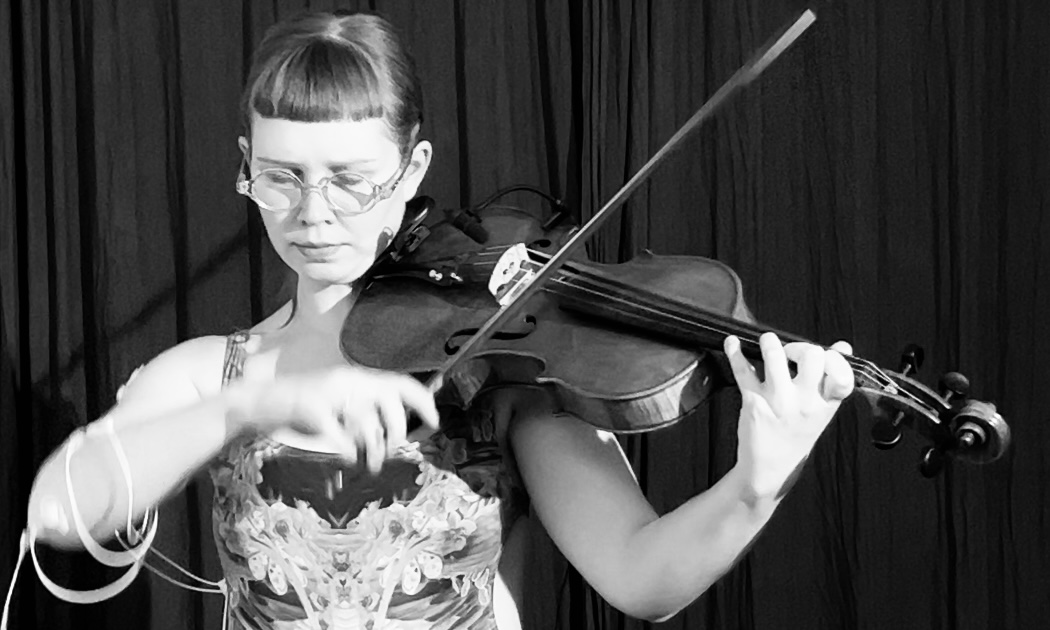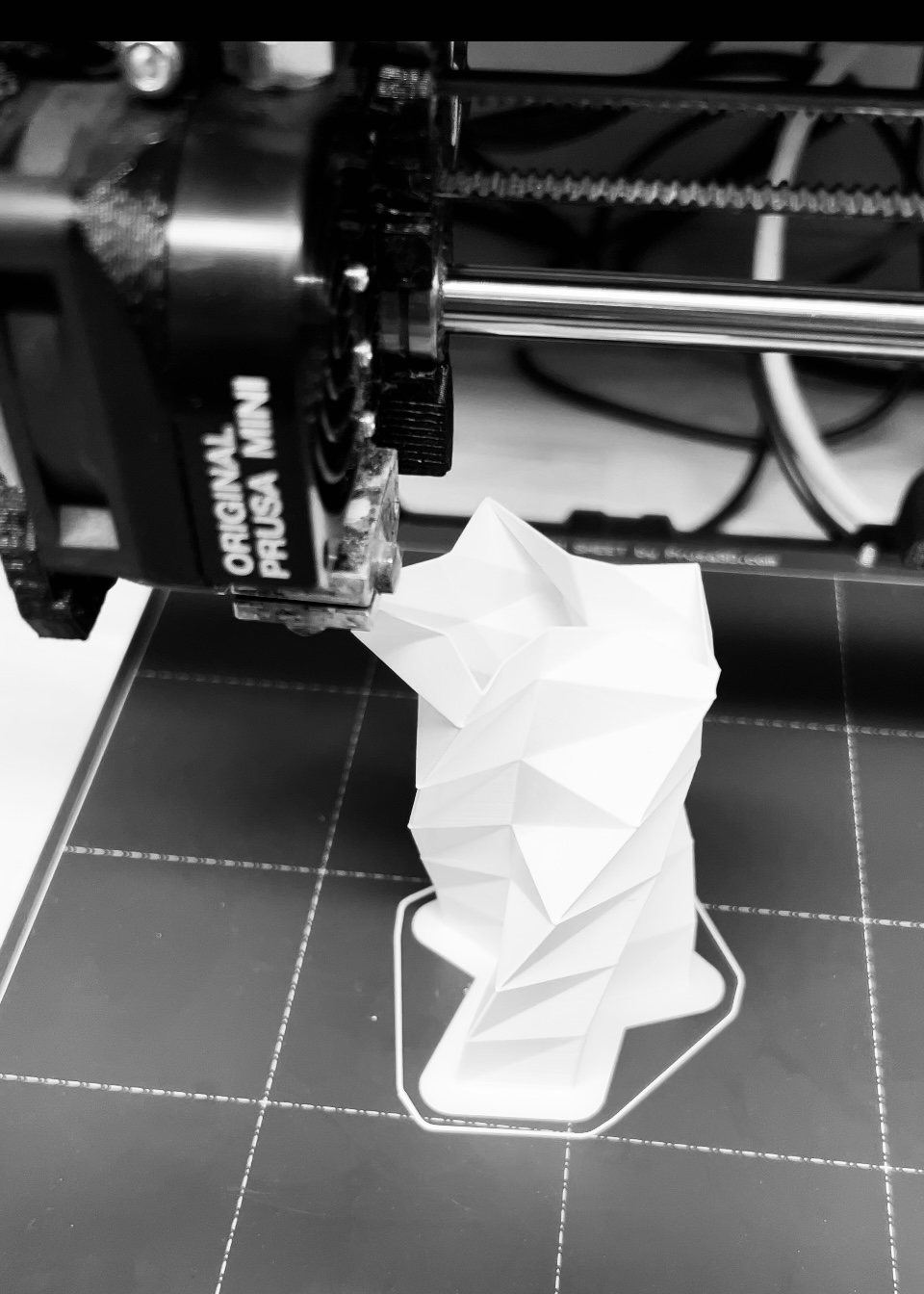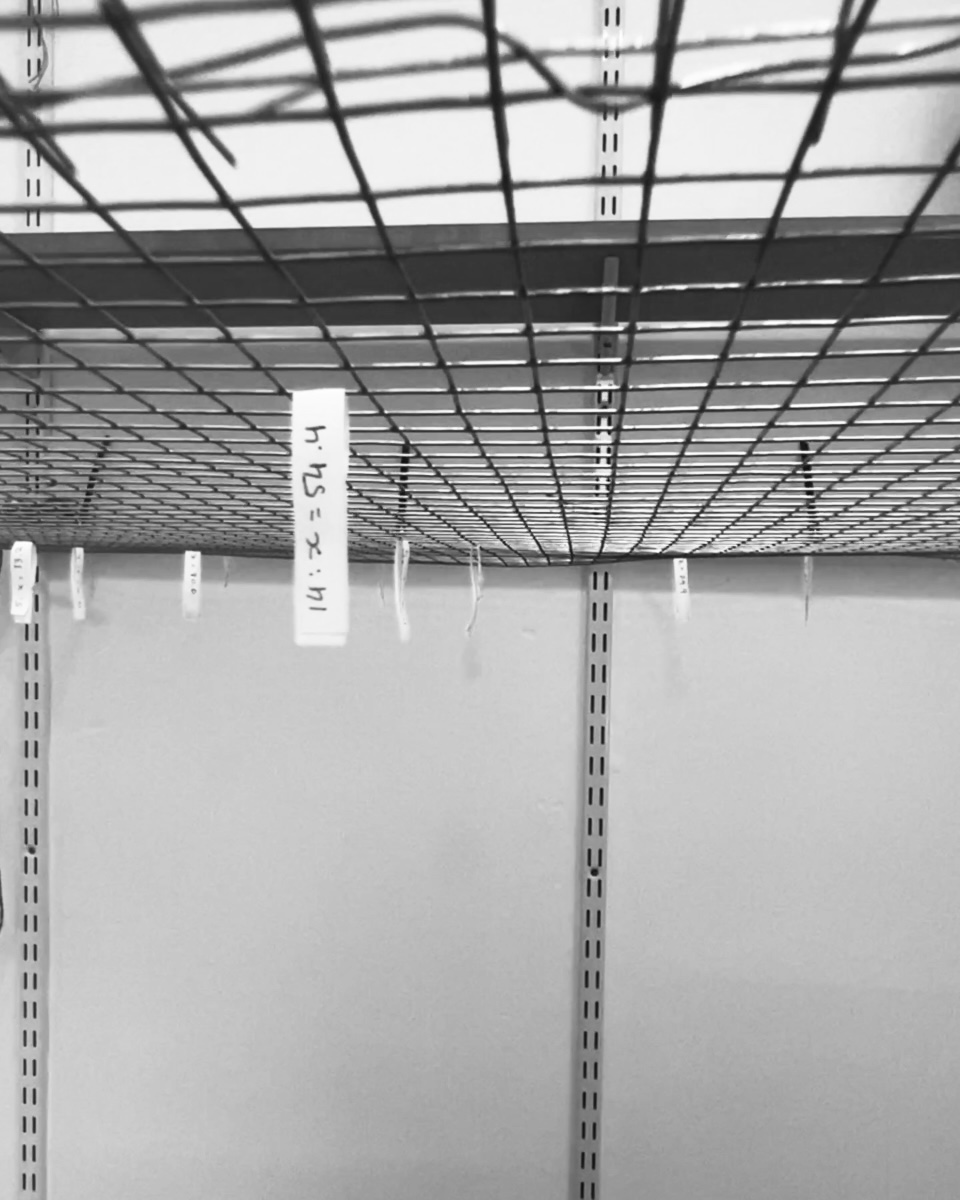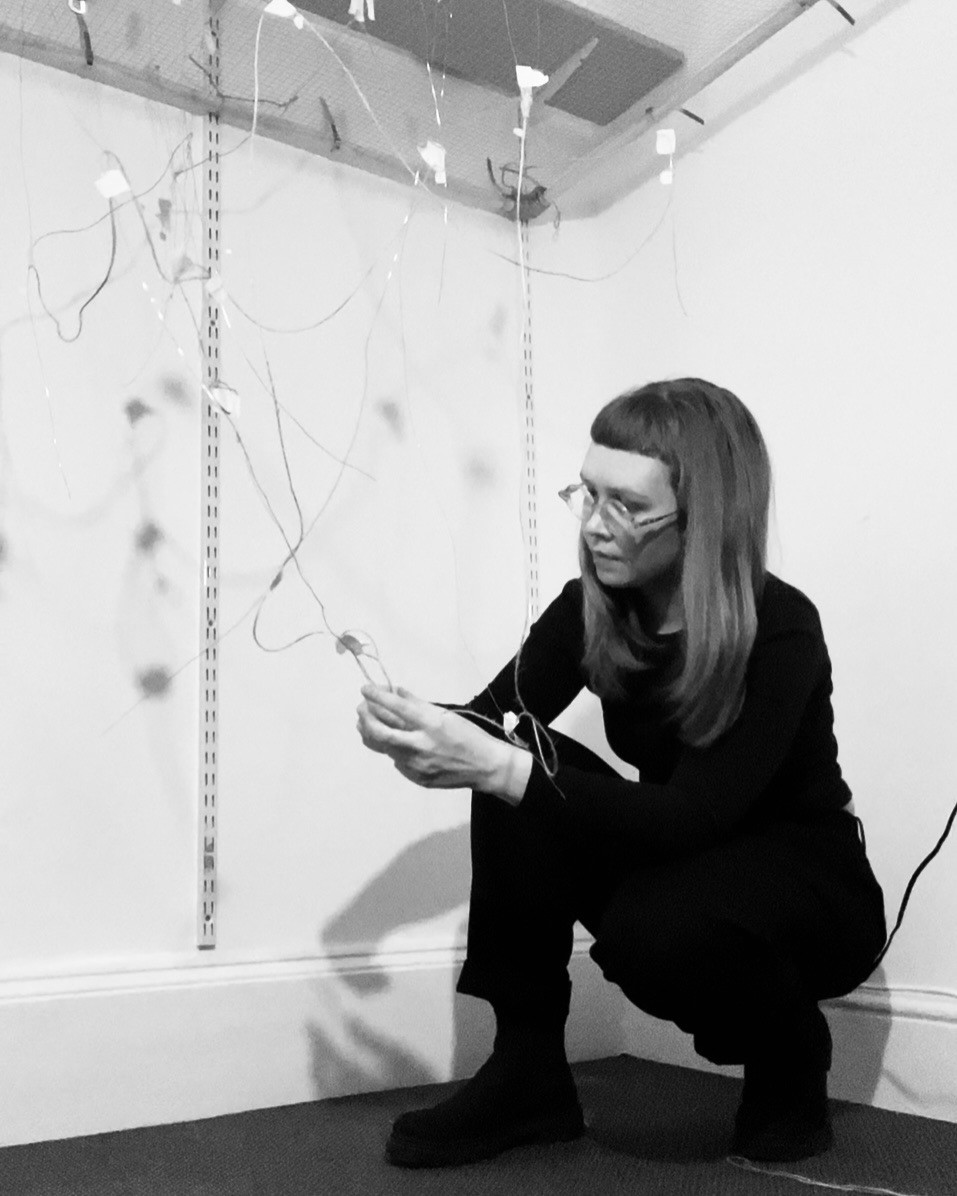Project Blog:
Hybrid self-portrait of the artmaker configuration of three agential nodes:
Lucy Strauss, a bespoke machine learning model and some Reishi mycelium.
Hybrid self-portrait of the artmaker configuration of three agential nodes:
Lucy Strauss, a bespoke machine learning model and some Reishi mycelium.
This page documents the ongoing artistic progress for my sculpture installation.
I use a multitude of human, machine and more-than-human materials, tools and techniques. These include viola performance, bioelectric data, Machine Learning (ML) and myco-fabrication. I describe the process of making and making with these many elements below. Ultimately, the artmaking work for this project begins and ends with biological materials, translating between the human and mycelial worlds through machines.
First, I collected a dataset of electromyographic (EMG) signals from my own body as I played viola, then designed and trained a Variational Autoencoder ML architecture on my dataset. After training, the model can sense and make sense of incoming EMG data from my body. By this, I mean that the model can semi-autonomously retrieve information and generate a response in a way that is somaesthetically meaningful to viola performance. Through this line of thinking, I term my trained model a Machine Somaesthete.




My VAE architecture and code for training and running the model are available open-source on GitHub. I do not share my dataset or trained model publicly because I consider these part of the artwork.
I played a collection of phrases on viola, inputting my EMG signals into the Machine Somaesthete as I did so. From these signals, the model generated a corresponding collection of trajectories in latent space, a hidden space of 50 dimensions at the core of the model. I refer to these internal generations as latent trajectories. I used computational techniques to reduce the dimensions of these latent trajectories into two and three dimensions, so that we (humans)* can interpret them.
*If you are a machine or a mushroom, I can reduce the dimensions to an amount matching your specifications. You can reach me here for requests.



I also tested the smoothness of the latent space organisation visually with interpolations:
This generative visualisation process was initially a technical exercise; I simply wanted to see if my model was working. That is, if it could discern differences between different phrases and performances of music through EMG signals (it can!). I found that the latent trajectories produced by the Machine Somaesthete produced were actually quite intriguing. I particularly enjoyed examining their squiggly forms from different angles and in relation to one another. Beyond a technical understanding of the Machine Somaesthete, this experience gave me an intuituve understanding of latent space - of the model’s internal sense-making tendencies.
I have a conference proceedings publication detailing this research up until this point:
Strauss, L., & Yee-King, M. (2024). Towards a Machine Somaesthete: Latent Modeling of EMG Signals in Viola Playing. 9th International Conference on Movement and Computing, 11 pages. https://doi.org/10.1145/3658852.3659074
I was compelled translate this visual experience of bio-electric latent modelling into an artwork for others to view. My next challenge was bring the latent trajectories into the physical world as sculptural objects. Initially, I thought to 3D print them as hollow, cylindrical molds with PLA, a recyclable bioplastic commonly used in 3D printing. I could then fill these molds with a mycelial substrate and grow mycelium inside the molds.


My next challenge was bring the latent trajectories into the physical world as sculptural objects. Initially, I thought to 3D print them as hollow, cylindrical molds with PLA, a recyclable bioplastic commonly used in 3D printing. I could then fill these molds with a mycelial substrate and grow mycelium inside the molds. I printed an entire latent trajectory, before realising that I wanted to take a different direction for two reasons:
1) I felt like I had too much control over the sculptural form and texture, all while not getting my hands dirty enough in the sculpting process.
2) Even though PLA is recyclable, it is still plastic that I would be making invisible in the final artwork.
So how else can we bring a latent trajectory from the inside of a computer to the physical world?
I am currently sculpting with wire, hessian fabric and mycelium (the root-like structure of many mushroom-producing fungal organisms). This process involves working with living mycelium, allowing the fungus to grow on



Once I had constructed the plotting scaffold and plotted the points, I fed hessian-wrapped wire through coordinates to embody the latent trajectory in the physical world. This step gave me a better idea of the final form of the sculptural object.



I then removed the hessian fabric pieces from the scaffold. I boiled them for a few minutes and placed them in large storage containers to use as a growing medium. I innoculated this damp fabric with Reishi grain spawn and sealed the containers with a combination of packing tape and masking tape to allow a bit of airflow, but avoid contamination. After a month, the medium in one of the three containers was covered in fluffy Reishi mycelium:




The grain spawn in the other two containers did not take as well:


My solution is to train the Reishi to digest mycelium by making five to ten smaller batches of hessian innoculated with grain spawn. Reishi will likely myceliate a few of these batches. I will then place a small myceliated batch in a container of hessian growing medium that I intend to use as sculptural material. I will disgard the unsuccessful small batches of training mycelium that did not myceliate.